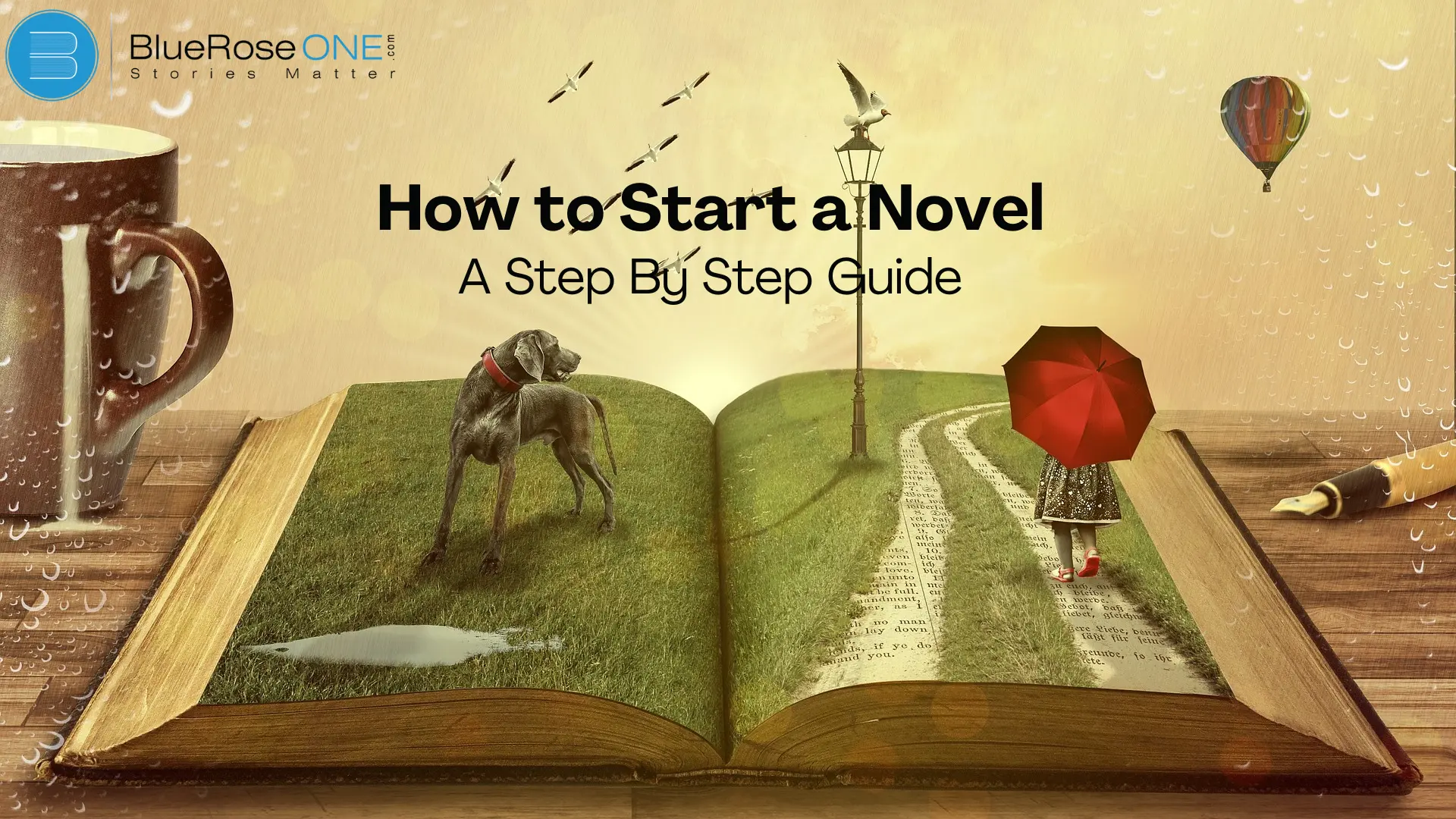Writing a novel can be likened to being at the foot of a mountain and gazing up at a cloud-covered summit. It’s thrilling, terrifying, and entirely attainable with the correct support. An engaging opening draws readers in and entices them to continue reading, setting the tone for the entire piece. Now let’s get started with this detailed guide to help you summit that mountain and get your novel off to a great start.
Step 1: Finding Your Idea
Brainstorming Techniques
A brilliant idea is the foundation of every great book. However, from where are these sparks coming? You may attempt freewriting, which entails writing nonstop for a predetermined amount of time without considering grammar or coherence. Or maybe you’re more of a mind mapper, where you arrange your ideas graphically. Remember the timeless “What if?” exercise? Ask hypothetical questions and see where your creativity leads you.
Evaluating Your Ideas
It’s important to assess your ideas as you begin a novel. Start by thinking about whether you find the idea intriguing and whether you can imagine it growing into a whole story.
Consider whether your intended audience will find your idea appealing. Consider how unique your idea is; while it’s acceptable to take ideas from previously published works, your story should offer a new viewpoint.
Finally, make sure your idea has enough substance to support a novel by outlining the key story points. This assessment procedure makes sure that the idea you select is worth your time and energy.
Step 2: Understanding Your Genre
Genre Conventions and Expectations
It’s important to know about genre expectations and conventions before you begin writing a novel. Every genre, from science fiction to romance, has established conventions and recurring motifs that readers can look forward to.
For example, a fantasy book might have supernatural aspects and grandiose missions, whereas a mystery book usually features a perplexing crime and a cunning investigator.
Comprehending these norms aids in crafting a captivating story and fulfilling reader expectations. Your story will stand out and appeal to your target audience if you follow genre conventions while incorporating your own distinctive spin.
Choosing the Right Genre for Your Story
Selecting the appropriate genre for your work is an essential first step while writing a novel. Your book’s general tone, characters, setting, and storyline are all influenced by the genre. Think about the stories you like to write and read while choosing the ideal genre.
Consider your intended audience and the possible things they may be searching for. Look at popular genres and current events to determine if your story would fit in there.
Recall that your work will be influenced by the genre you select in many ways, so take your time selecting the ideal fit. This well-considered decision will lay solid groundwork for your writing career.
Step 3: Developing Your Premise
Crafting a Compelling Premise
Developing a captivating idea is an essential first step in writing a novel. Your story’s central conflict or theme should be succinctly and intriguingly stated in your premise.
This establishes the basis for your plot and aids in drawing readers in. The who, what, when, where, and why questions are frequently addressed in a powerful premise, providing readers with an overview of what to expect.
For instance, you may state, “A young boy discovers he has magical powers and must save his kingdom from an evil sorcerer,” rather than, “A boy goes on an adventure.” This strategy not only piques interest but also creates the ideal environment for an engrossing tale.
The Elevator Pitch
Making a proposal for your work is a crucial step in the writing process. This is a succinct, captivating synopsis of your story that aims to captivate readers or possible publishers right away.
If someone asks you about your novel in a lift, you should be able to respond to them in a few sentences. Pay attention to your story’s central character, its central conflict, and what makes it special.
A well-crafted elevator pitch will ensure that you stay on course from start to finish by helping to make the subject of your work clear and maintaining focus while you write.
Step 4: Creating Your Characters
Protagonist, Antagonist, and Supporting Characters
Creating strong characters is essential when starting a story. The protagonist, who propels the narrative along, frequently encounters obstacles that mould their path. Tension and conflict arise from the antagonist’s opposition to the protagonist.
By providing a variety of viewpoints and assisting in the plot’s development, supporting characters give the story more depth and richness.
For a character to be distinctive and likeable, they should each have unique qualities and motivations. Well-crafted characters offer your book a solid basis and draw readers in, making for an engrossing and comprehensive narrative.
Character Development Tips
When you start a novel, it’s crucial to craft compelling characters. The protagonist is the main character who drives the story forward, often facing challenges that shape their journey.
The antagonist opposes the protagonist, creating conflict and tension. Supporting characters add depth and richness to the narrative, offering different perspectives and aiding in the development of the plot. Each character should have distinct traits and motivations, making them memorable and relatable.
Thoughtfully designed characters not only engage readers but also give your novel a strong foundation, ensuring a captivating and well-rounded story.
Step 5: Building Your World
World-Building Basics
When writing a novel, creating the world is an essential first step. It entails establishing the universe of your novel, including its place, culture, and laws. Imagine the actual surroundings first, whether it’s a strange planet, a busy city, or a mysterious woodland.
Think about the political and social institutions, the division of power, and potential conflicts. Remember the minor things that give your world a sense of realism, such as traditions, customs, and technological advancements.
This base will draw readers in by engrossing them in a vivid, believable environment from the outset, while also improving your plot.
Integrating World-Building with Plot
When writing a novel, it’s imperative to incorporate world-building into the narrative. While plot refers to the series of events that move the story along, world-building is the process of creating a convincing and captivating backdrop for your work.
You can increase the depth and involvement of your readers by including world-building into your story. As an example, progressively reveal the main components of your imaginary world as they inevitably come together with the plot. This method keeps readers from being overly informed up front while also enhancing the story.
By keeping these components in check, you can make sure that the setting of your book feels essential to the plot and draws readers in from the first.
Conclusion
Writing a novel is a journey, and starting it can be the most daunting part. Celebrate your progress, no matter how small, and keep looking forward. With determination and the right steps, you’ll reach that final page. Happy writing!
















